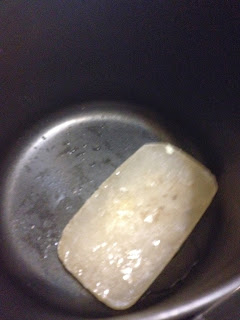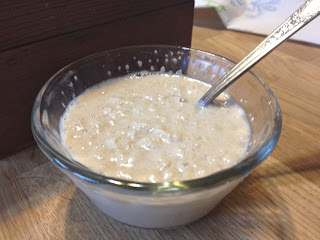Turkey
or Chicken Pot Pie
8 cups chopped vegetables:
·
2 medium russet potatoes, peeled and
cubed
·
4 ribs celery, stringed and thinly
sliced
·
4 carrots, thinly sliced
·
1 medium onion, chopped
·
3 cloves garlic, minced
4 cups liquid (chicken or turkey broth, vegetable
broth, water, or a combination of any of these)
2 cups frozen green peas, defrosted and drained
4 cups cooked, chopped turkey or chicken
¼ cup butter
½ cup all-purpose flour
Milk (approximately 1 cup)
Salt and pepper to taste
Pastry for 2 double crust pies
Place single pastry into two 9 inch pie plates or
one 9x13 inch casserole; reserve remaining pastry for top crust.
 |
| The bottom crust in this case was pieced together, utilizing pastry from a previous endeavor. |
In a medium saucepan, place 4 cups liquid and the 8
cups chopped vegetables; bring to a boil and reduce heat. Simmer vegetables until tender, approximately
30 minutes.
 |
| I started with approximately 1 cup frozen chicken broth and added 3 cups water for cooking vegetables. |
Drain cooking liquid into a
4 cup measuring cup and set liquid aside.
Some of the liquid will have evaporated, yielding about 3 cups liquid.
Combine cooked vegetables, green peas, and turkey or
chicken in a large bowl, set aside.
To prepare gravy:
Add milk to vegetable cooking liquid to equal 4 cups. In the same saucepan in which vegetables were
cooked, melt ¼ cup butter (1/2 stick).
Using a whisk, add flour to melted butter and mix until all flour is
coated in fat. Add liquid to fat/flour
mixture and whisk well. On medium heat,
cook and stir until mixture is thickened and has just reached the boiling
point. Remove from heat; season with
salt and pepper to taste. |
| Add milk to cooking liquid to equal 4 cups. |
Pour gravy over turkey/vegetable mixture and stir
gently. Pour all into prepared pie plates or casserole; top with remaining pastry. Bake at 350°F for 30 minutes or until pastry is browned evenly.











